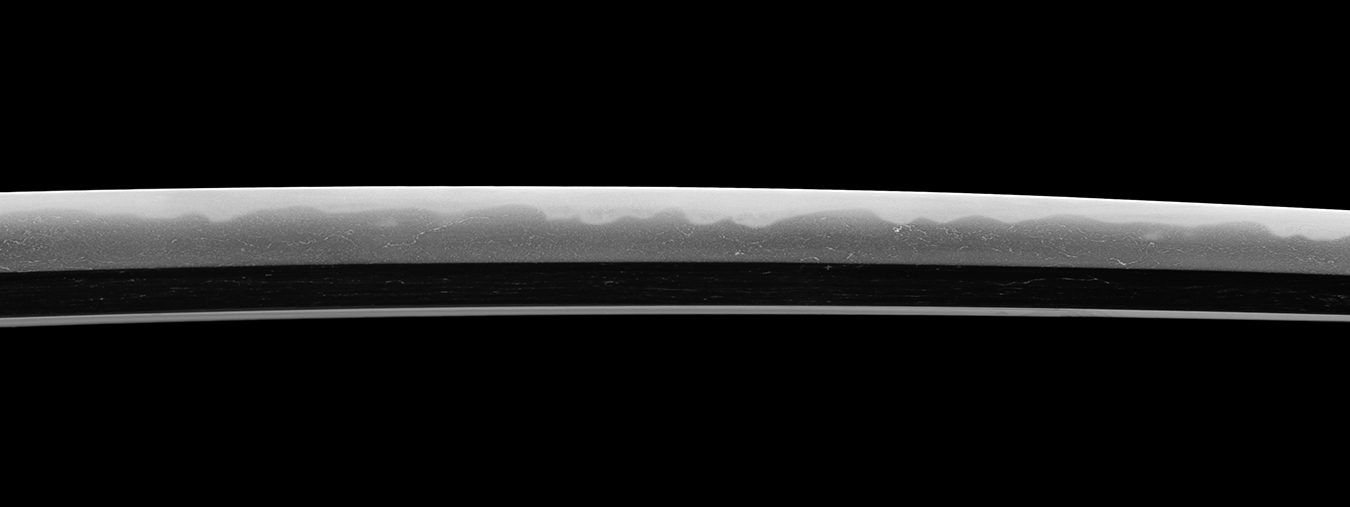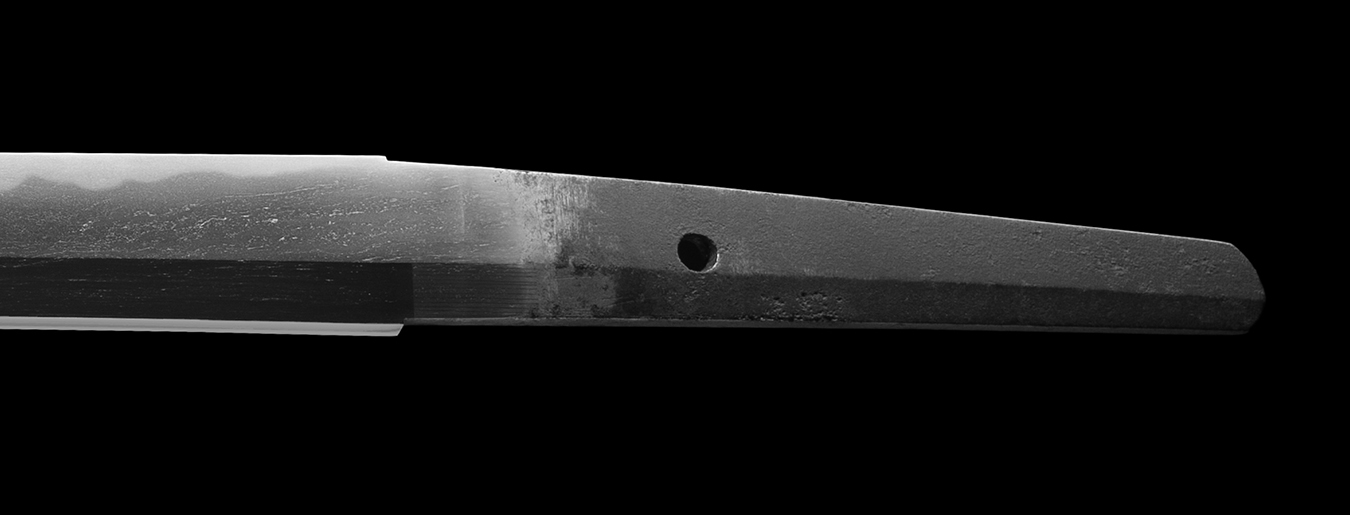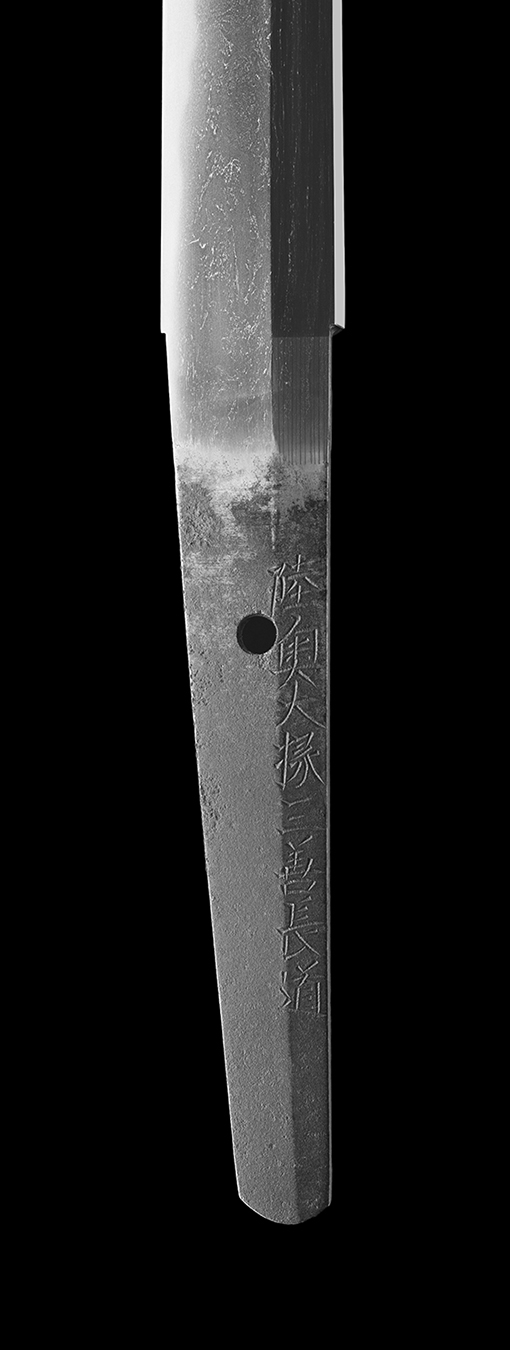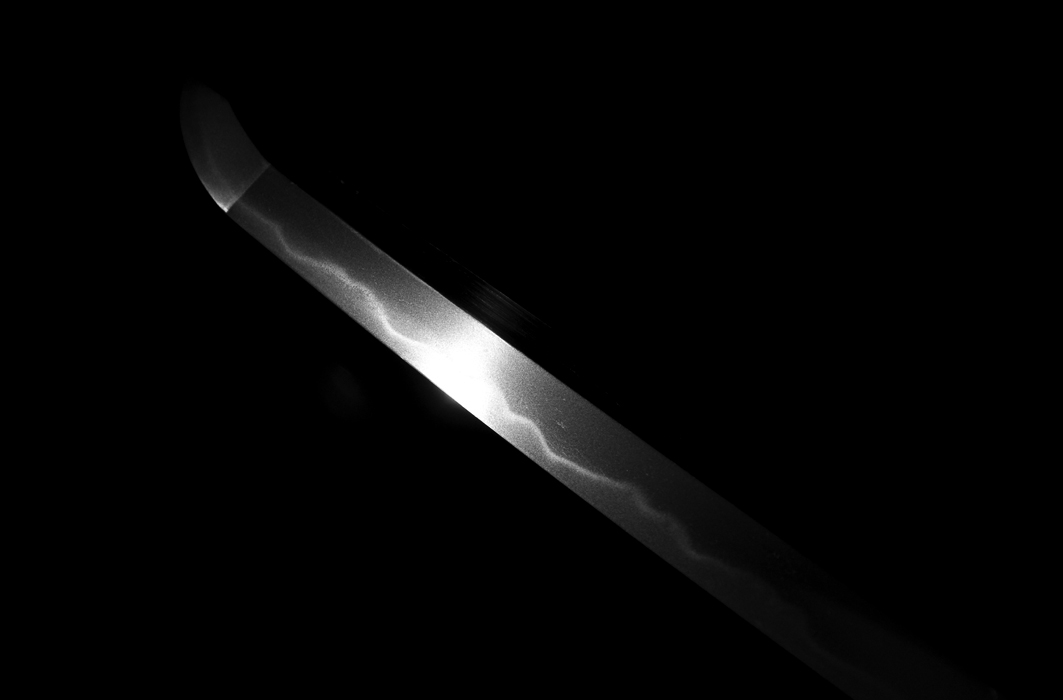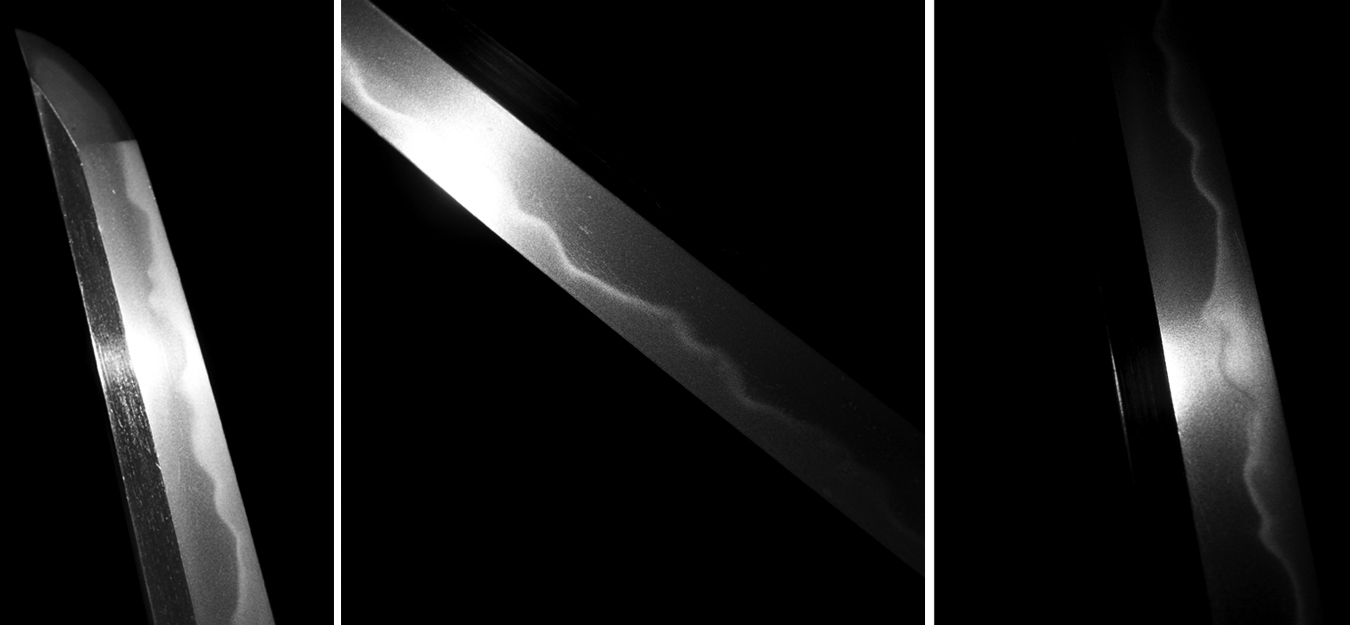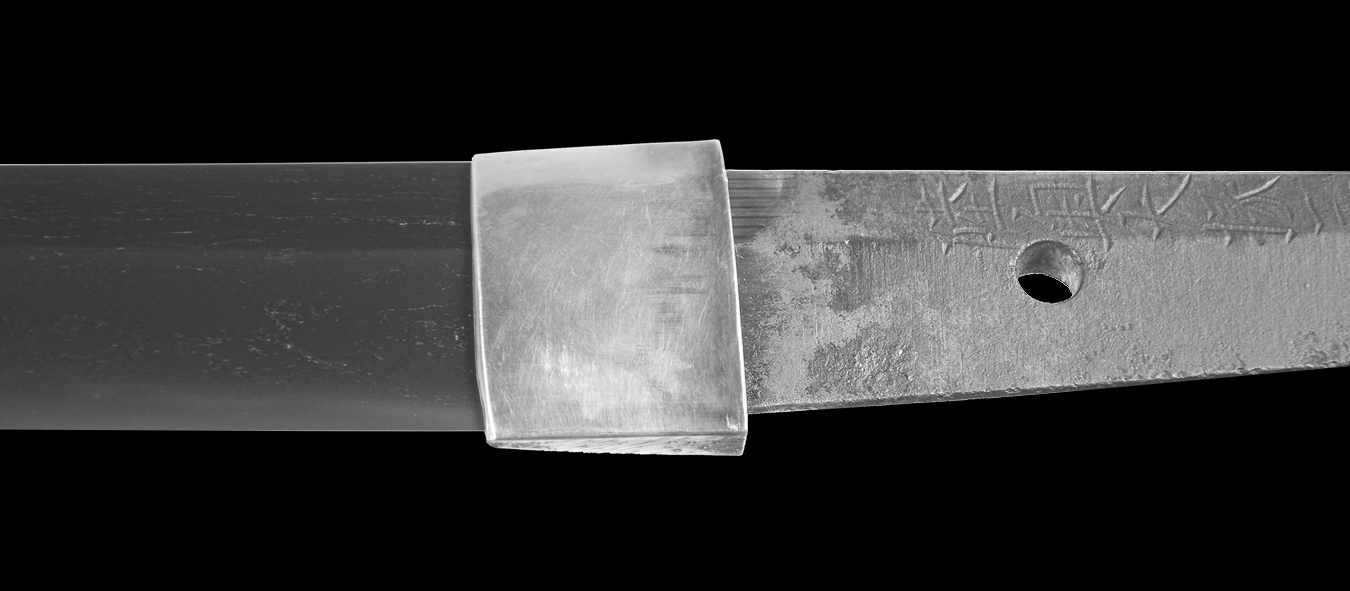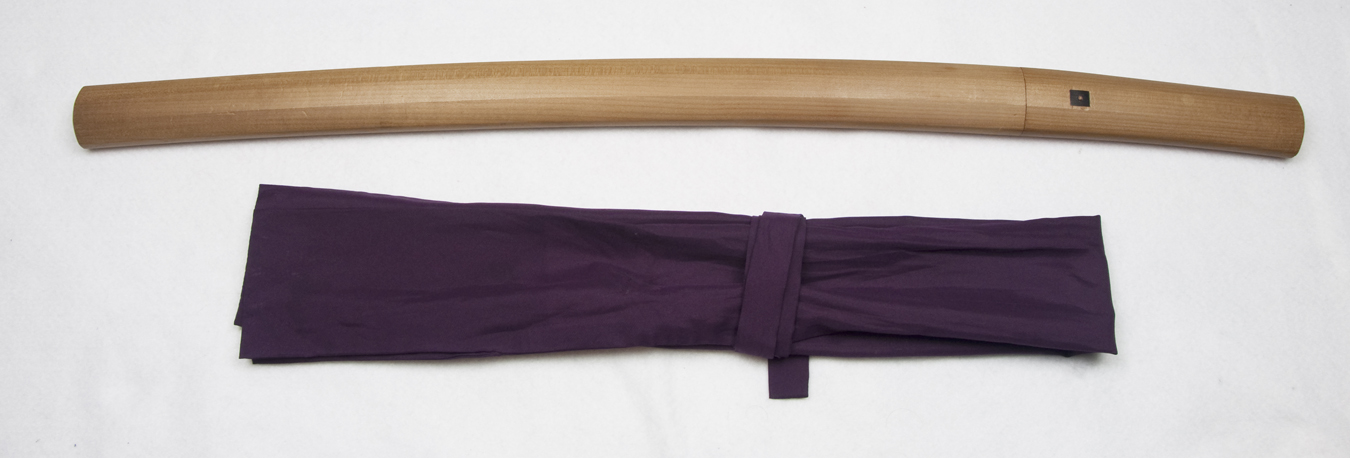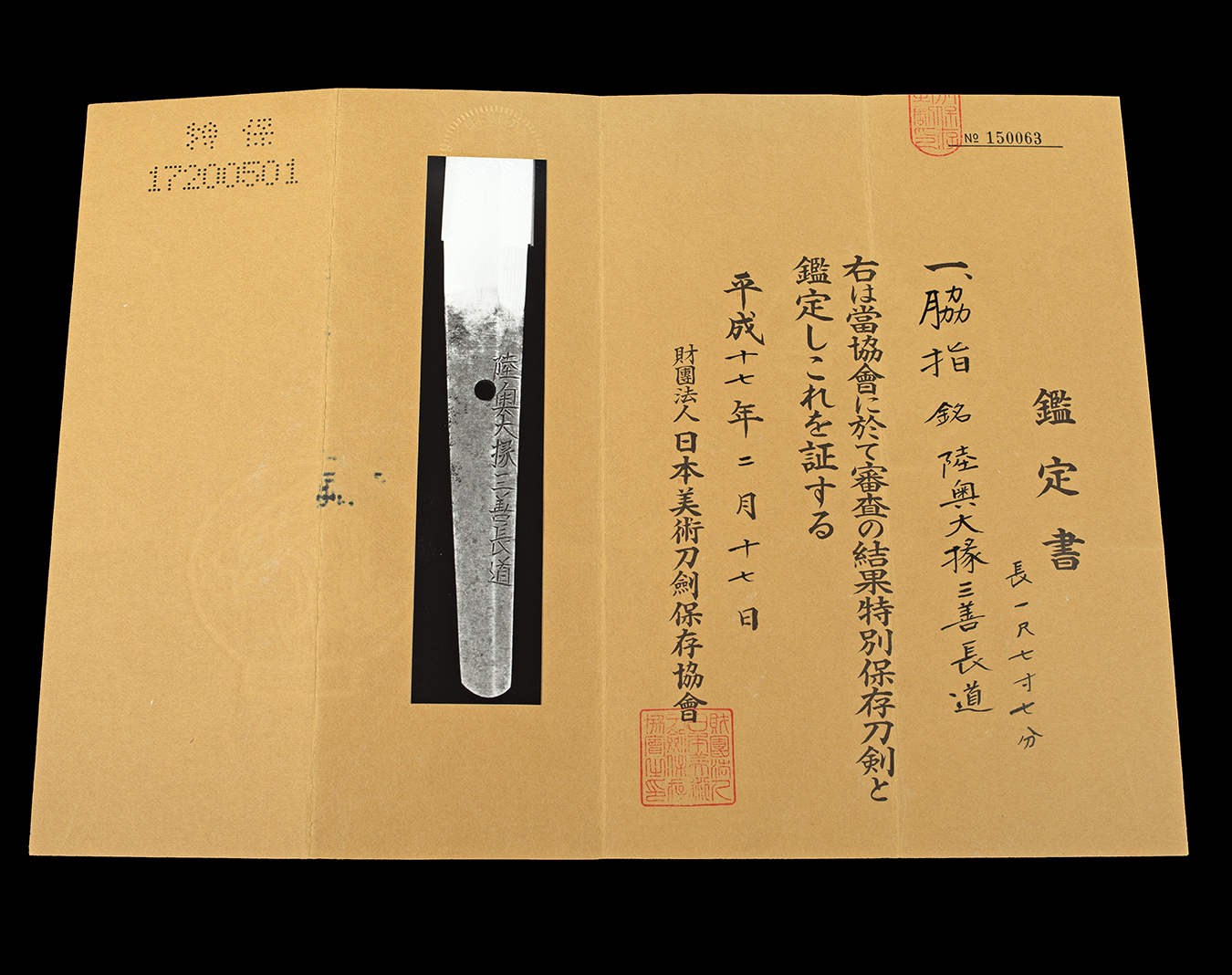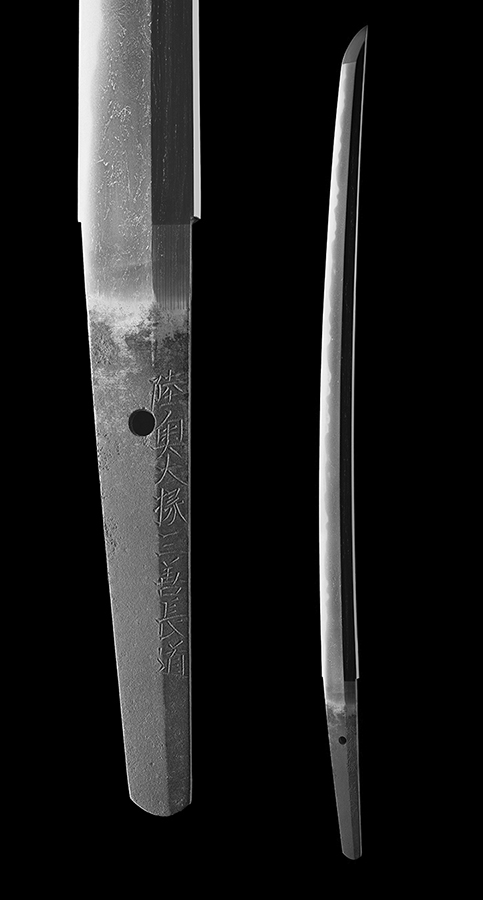|
| |||||||||||||||||||||||||||||||||||||||||||||||
Hamon : Ko-nie deki gunome midare. The midare are tapered and most of the gunome are arranged in pairs. There are ashi at the valley of each gunome. The nioi-guchi is made up of dense ko-nie with larger nie particles applied over the nioi-guchi. The nioi-guchi is dense and luminous.
Boshi : Ko-maru with a medium kaeri. There are ko-nie and kinsuji in the boshi-ji. The omote is slightly togari.
Kitae : Hada-tachi itame nagareru with ko-mokume. Ji-nie covers the entire ji. There are chikei and tobiyaki.
About this sword : This is an ubu wakizashi by the first generation Miyoshi Nagamichi. The shodai Nagamichi was active around Kanbun (1661-1673). He was born in 1633 and received his title of Mutsu no Daijo in 1659 at age 27. He died in 1685 at age 55. So this blade that bears his title was made between 1659 and 1685. He was the son of Miyoshi Masanaga. After the death of this father, he studied under his uncle Miyoshi Nagatoshi. After he received his title, he went to Edo to study the secrets of a sword's sharpness and cutting ability with the famous sword tester Yamano Kanjuro Hisahide. One record also states that he was a student of Tsuda Sukehiro as well. Miyoshi Nagamichi is a highly regarded smith. He is given the rank of Jo Saku by Fujishiro, valued at 6 million yen in the Toko Taikan and ranked as Saijo-O-Wazamono by the Yamada family for the cutting ability of his swords. This maker was also known as the "Kotestu of Aizu" due to the high quality of his swords. Also the character of his hamon is often like Kotestu's "hanetora" period, as see in this sword.
The shodai Miyoshi Nagamichi is one of only 13 smiths ranked as Saijo-O-Wazamomo by the Yamada family of sword testers. The criteria to achieve this ranking is that 8-9 out of 10 tested blades by a given smith had to perform at the o-kiremono level. The meaning of o-kiremono is that the blade cut through the central chest of an adult male completely and with ease. "Completely" and "with ease" are the key factors. Works by Saijo O-Wazamono makers are celebrated for their outstanding achievement in executing the functional purpose of a blade.
The workmanship of this sword is enlightening to study. One can see special attention paid to features that are known to reduce drag in the cutting of a human body. The hada, appearing somewhat haphazard, "stands up" from the surface. It may not look "artful" but it is by design. This hada that "stands up" is covered in thick ji-nie. The nie act as tiny hard bumps that help to push material away from the ji as the ha does its work in the cut. This blade has a few rough areas as shown in the photos. They are often seen in this style of workmanship. In one perspective, the quality of a blade can be measured by the extent that its workmanship realizes the smiths aims. This blade is easy to appreciate in that regard.
This sword is in full polish. The geometry is crisp and the hadori is well done. The blade comes with a shira-saya, silver foil habaki and a NBTHK Tokubetsu Hozon paper. It was also published in the book "Japanese Swords from American Collections Volume I". Please see the photo of its pages below. Being one of only 13 smiths, out of thousands, to achieve the highest rank for cutting ability of Saijo-O-Wazamono - this Nagamichi presents an exciting opportunity. An ubu, Jo-Saku, zaimei, published Saijo O-Wazamono blade in full polish with Tokubetsu Hozon papers.
HOLD



